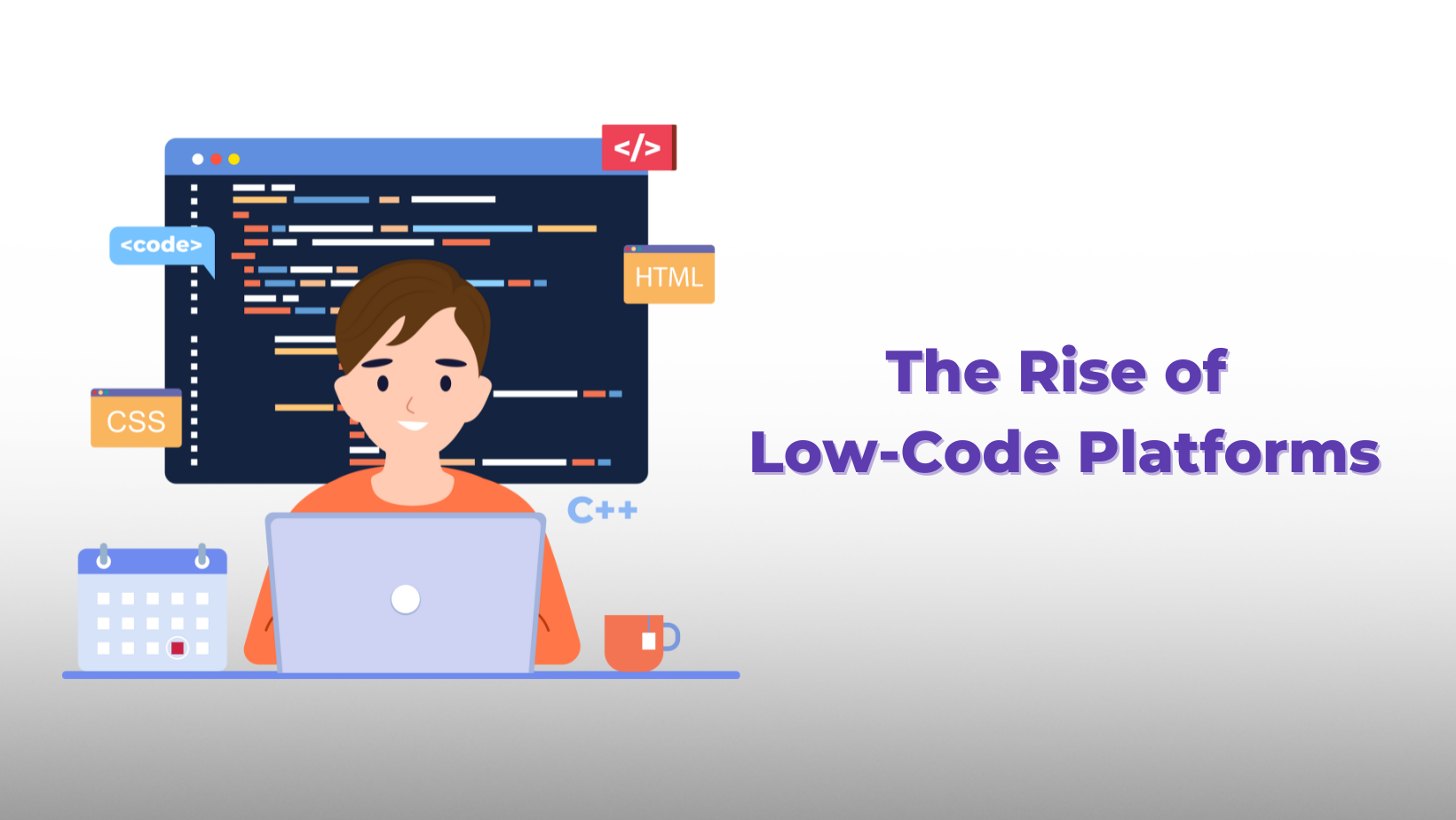
What Are Low-Code and No-Code Platforms?
Low-code and no-code platforms provide intuitive environments for building applications. Low-code platforms require minimal coding with visual tools, while no-code platforms eliminate coding entirely using graphical interfaces. Therefore, both types simplify app development and accelerate delivery.
Low-Code Platforms: These platforms provide a user-friendly interface to design and develop applications. Users can drag and drop components, configure workflows, and integrate systems with minimal coding. Popular low-code platforms include OutSystems, Mendix, and Microsoft Power Apps.
No-Code Platforms: No-code platforms enable users to build applications without writing code. They use visual builders and pre-defined templates. Examples include Bubble, Airtable, and Adalo. These platforms target users with limited technical skills but a clear vision for their application.
The Benefits of Low-Code and No-Code Platforms
Accelerated Development: Low-code and no-code platforms significantly reduce development time. Users can quickly build and iterate on applications. This speed boosts efficiency and allows for rapid responses to business needs.
Lower Development Costs: By reducing the need for specialized coding skills, these platforms lower development costs. Organizations can save on hiring developers and focus resources elsewhere. This cost efficiency is appealing to startups and large enterprises alike.
Empowerment of Non-Technical Users: These platforms enable non-technical users to participate in app development. For instance, business analysts, marketers, and other domain experts can create and modify applications tailored to their needs. Consequently, this empowerment fosters innovation and aligns applications more closely with business requirements.
Flexibility and Customization: Despite their ease of use, many low-code and no-code platforms offer customization options. Users can add custom code, integrate with existing systems, and adjust features as needed. This flexibility ensures that applications can meet specific business requirements.
Improved Collaboration: Low-code and no-code platforms often include features for team collaboration. They allow multiple users to work on an application simultaneously, facilitating communication and collaboration between business and IT teams.
Challenges and Limitations
Scalability Issues: While low-code and no-code platforms are great for rapid development, they can face scalability issues. Applications built on these platforms might struggle with high user loads or complex functionalities. Scaling such applications may require significant adjustments or a transition to custom development.
Security Concerns: Security is a critical concern with any development platform. In particular, low-code and no-code platforms may have vulnerabilities, especially if users lack experience in securing applications. Therefore, ensuring that these platforms adhere to best practices in security is essential for protecting sensitive data.
Limited Customization: Although many platforms offer customization options, they may still be limited compared to traditional coding. Users might encounter restrictions that prevent them from implementing highly specific or complex features. This limitation can affect the overall functionality and adaptability of applications.
Vendor Lock-In: Many low-code and no-code platforms are proprietary, leading to potential vendor lock-in. Organizations might find it challenging to migrate applications to different platforms or traditional development environments. This lock-in can impact long-term flexibility and control.
Learning Curve: Despite their simplicity, low-code and no-code platforms still have a learning curve. Users must familiarize themselves with the platform’s interface and features. While these platforms aim to be user-friendly, some level of training and experience is necessary for effective use.
The Future of Low-Code and No-Code Platforms
The future of low-code and no-code platforms looks promising. As technology advances, these platforms are expected to become more powerful and versatile. Additionally, integrating artificial intelligence (AI) and machine learning (ML) will enhance their capabilities, expanding their potential applications.
Integration with AI and ML: Future low-code and no-code platforms will likely incorporate AI and ML features. Specifically, these technologies can automate routine tasks, provide predictive analytics, and enhance decision-making. Consequently, integrating AI and ML will extend the capabilities of these platforms, making them more valuable for complex applications.
Enhanced Customization Options: As the demand for customized solutions grows, platforms will need to offer more flexibility. Expect future low-code and no-code platforms to provide advanced customization options, allowing users to tailor applications more precisely to their needs.
Broader Adoption Across Industries: The adoption of low-code and no-code platforms will continue to expand across various industries. As more organizations recognize the benefits, these platforms will become integral to digital transformation strategies. Industries such as healthcare, finance, and retail will leverage these platforms for diverse applications.
Improved Security Measures: Addressing security concerns will be a priority for platform developers. As a result, future platforms will likely implement robust security features to protect applications and data. Moreover, these enhancements in security will build trust and encourage wider adoption.
Greater Focus on Integration: Seamless integration with other tools and systems will become increasingly important. Future platforms will enhance their ability to integrate with existing software, databases, and APIs. This focus will improve interoperability and streamline workflows.
Conclusion
The rise of low-code and no-code development platforms represents a significant shift in the technology landscape. These platforms simplify application development, reduce costs, and empower users with limited technical skills. While challenges such as scalability, security, and customization exist, the benefits are compelling. As technology evolves, low-code and no-code platforms are likely to become more powerful, versatile, and widely adopted.
Organizations should embrace these platforms as part of their digital transformation strategy. By leveraging the strengths of low-code and no-code platforms, businesses can accelerate development, improve collaboration, and drive innovation. The future of these platforms holds exciting possibilities, making them a crucial component of modern technology solutions.
Author: Golvez Technology
